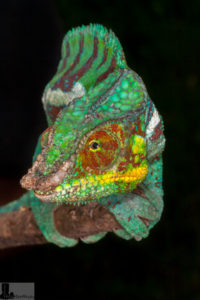Chameleons in Madagascar
Madagascar is famous for its biological diversity. This nature stands out for its beauty, colors 
In Madagascar, we find more than half of the 150 chameleon species existing worldwide, and a large part of the species is. Chameleons in Madagascar are even endemic to the island. They can be distinguished into three main chameleon species: the larger Furcifer, the Calumma known for its horns, and Brookesia, which belongs to the smaller chameleons.
Description of Chameleons in Madagascar
The scientific name for chameleons is “Chamaeleonidae”, a species from the family of lizards, specifically a descendant of a suborder of reptiles. It is a four-legged tree-dweller that feeds exclusively on insects.
The chameleon arrived later and confirmed that “humans die, but are then reborn”. But humans no longer believed it and did not accept its message that death is only temporary. In this way, humans became mortal.
This myth is quite widespread on the African continent. The belief in the existence of the “Angst” or superstition surrounding the Betsimisaraka people in Madagascar is deeply rooted in their culture. This species is considered a mediator between humans and nature, or even between humans and higher beings. Literature on this topic includes “Amphibians and Reptiles of Madagascar” by Vences & Glaw, Cologne 2007, ISBN 978-3-929449-03-7.








